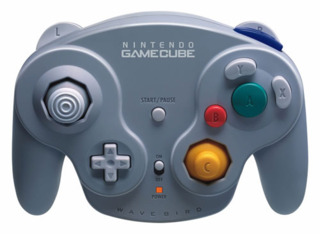The Simple Brilliance of the Wavebird (And What Nintendo Can Learn From It)
By Darth_Navster 6 Comments

In 2002, Nintendo released the Wavebird controller for their Gamecube console. The controller, a wireless take on their regular Gamecube controller minus the rumble, stands as one of my favorite video game input devices ever. In the Wavebird, Nintendo made the first wireless controller that worked as well as its wired counterpart and pushed the industry to make wireless inputs standard in subsequent console generations. But further to that, it also came from an era when I was actually passionate about Nintendo products. With Nintendo soon to debut its NX console in a bid to win back its many customers that jumped ship from the Wii and Wii U, hopefully they can take the following lessons from its groundbreaking controller to heart.
It Just Worked
The Wavebird was not the first wireless controller, but it was the first one that actually worked well. I imagine most people who were around for the PS2/Gamecube/Xbox days remember the countless third party controllers that never quite felt right or reliably worked with their consoles. Nintendo, on the other hand, focused on delivering a wireless controller that worked almost as reliably as its wired equivalent. In addition, the Wavebird was designed to squeeze countless hours of battery life from a pair of double AAs. Certainly, trade-offs had to be made, such as the lack of rumble and slightly bulky aesthetics, but that was offset by a controller that the player didn’t have to worry about. The result was gaming nirvana, as I was able to play countless hours of Wind Waker and Mario Golf in whatever position I found most comfortable. From the Wii onward, however, the controller no longer melted away to facilitate gaming. Instead it became the centerpiece, the thing that was the focus of the experience. I don’t think there’s been a Wii game (including even the sublime Super Mario Galaxy) where I didn’t have to fight against the motion controls or awkward form factor. This issue became more prevalent with the Wii U, as you literally had to split your attention between the controller and TV for many games. Whatever the design of the NX, it shouldn’t attempt to include innovation for innovation’s sake. Instead, Nintendo needs to ask the following question; will X feature improve the player’s experience? Granted, it’s tough to predict what features will or will not be useful to everyday players, but Nintendo needs to be more discriminating in the features that it decides to include. If that leads to a more conventional console design, then so be it.
It Did Just Enough
The brilliance of the Wavebird was that it didn’t overreach in its ambitions. Nintendo wanted to make a wireless version of their standard controller at a reasonable cost and did just that. Similarly, the NX should be focused on doing just enough to satisfy consumers. The system need not have best-in-class graphics or a wholly innovative input method to be successful. What it does need to do is address the software drought that’s plagued the Wii U and 3DS. To that end there needs to be more focus on ensuring the development pipeline is producing a steady stream of quality content. This doesn’t just have to be boxed $60 titles, but also experimental downloadable titles. In-house development can also be augmented by making it easy to port Unity-based indie titles onto the platform, and by Nintendo using their massive war chest to co-develop titles with third parties. Make the NX the premiere place to play lots of top-notch games with the patented Nintendo polish and they’ll have made a compelling piece of hardware.
It Shamelessly Stole Ideas
The Wavebird was hardly a surprise when it first released. As previously mentioned, stores were full of third party wireless controllers that used the same basic concepts at the time of the Wavebird’s release. Furthermore, the Wavebird and standard Gamecube controller both shamelessly stole their basic design from Sony’s DualShock controllers. I say this not to disparage Nintendo, but to emphasize the fact that learning from competitors and implementing those lessons is just good business. Nintendo needs to observe what Sony, Microsoft, and PC developers are doing well and incorporate these features where it makes sense. Nintendo would be well served by creating an online service like PSN or Xbox Live, a subscription service giving out games each month, or even a Netflix-like monthly charge to access the entirety of the Virtual Console. These features would not make the NX feel any less like a Nintendo console, but they would help to make the console appealing to a generation that grew up on Playstations and Xboxes.
Parting Thoughts
I’m writing this mostly to put on paper things that have been rattling around in my head and I make no claims that these ideas will turn around Nintendo’s flagging fortunes. My perspective is that of someone who grew up with Nintendo but drifted away when I realized that they weren’t catering to my wants as a consumer. Can Nintendo reinvent the wheel yet again and succeed? Absolutely. But part of me wants to see what they can do if they release a no-nonsense console that gets them back to making awesome games. Maybe I’m thinking too small, or that I’m focusing on my generation’s thoughts and experiences to design a dated console. In any case, I’m rooting for Nintendo to wow me like it has in the past. The NX is facing incredible expectations by both consumers and Nintendo itself, and who knows if it will live up to them. But Nintendo’s been on the ropes before and I can’t wait to see what they come out swinging with.